Shows
Crossing the River by “Feeling the Stones”
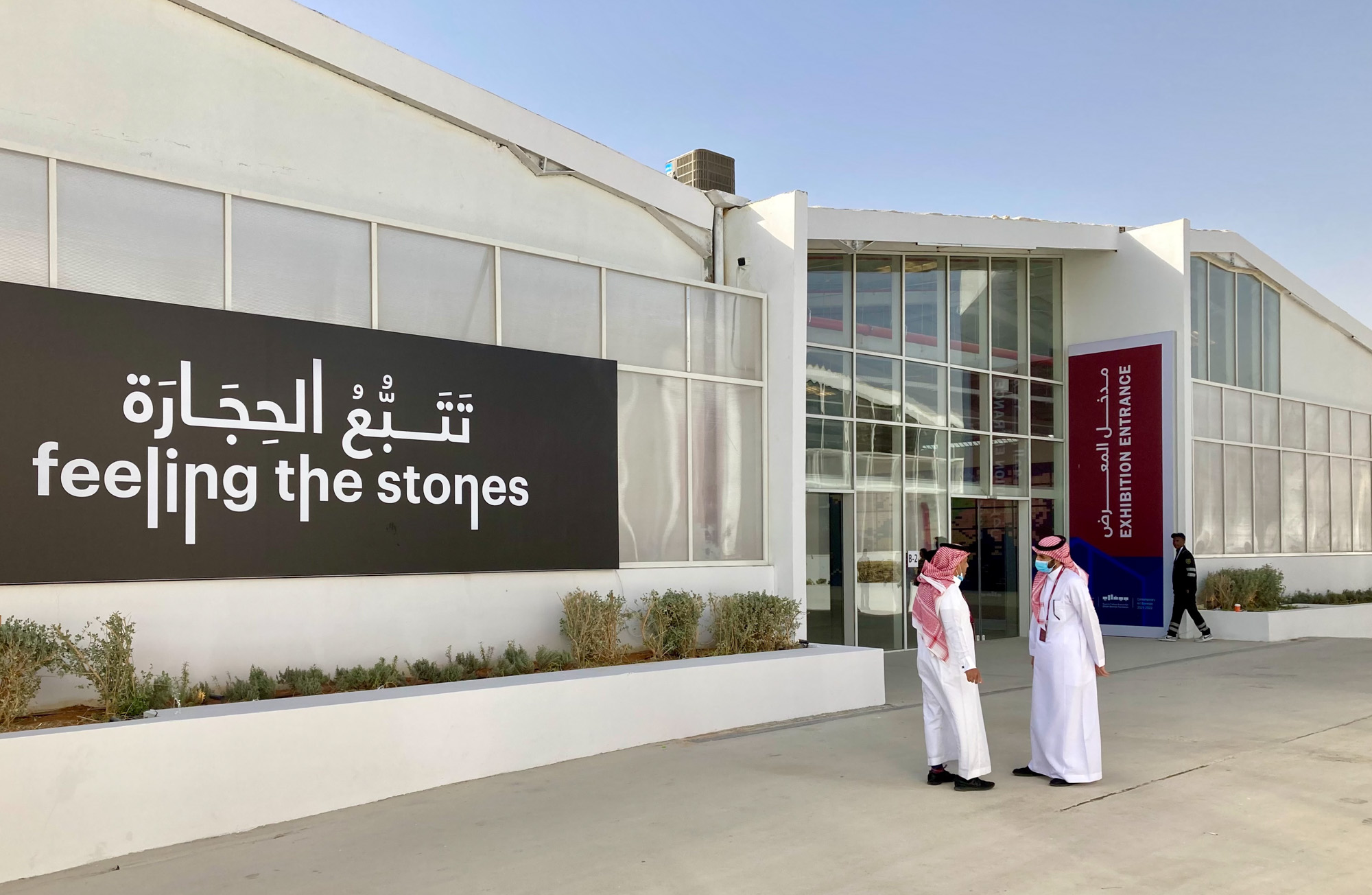

The Diriyah Contemporary Art Biennale is the first of its kind in Saudi Arabia. Strikingly designed and compellingly curated, the inaugural edition is titled “Feeling the Stones” and organized by a team of curators led by Philip Tinari, director of Beijing’s UCCA Center for Contemporary Art. Bringing together arresting artworks and new commissions by 63 global artists, including 27 Saudi practitioners, the event unfolds across a series of refurbished warehouses in the JAX cultural district of Diriyah, just outside of Riyadh.
“‘Feeling the stones’ [is] a saying which comes to us from 1980s China in the whole form of ‘crossing the river by feeling the stones,’” Tinari shared at the preview, elaborating on the curatorial premise. “At that time, it was used as a way of talking about the massive social and cultural opening then taking place, and referred to a kind of progress that was incremental and experimental—a step at a time from one stone to the other. The slogan spoke to me on two levels, first in Saudi Arabia, where we are privileged to witness a similar moment of dynamism, optimism, and openness . . . and second, as a way of thinking about how artists around the world and across time approach their work—experimentally, improvisationally, directionally—and how they relate to their societies and to global culture.”
Under this theme, the show is further broken down into six sections: “Crossing the River” draws parallels between pioneering contemporary Saudi artists of the 1990s and 2000s with an earlier moment of experimentation in China that began in the economic-reform era in 1978; “Experimental Preservation” examines artists mining the past for present inspiration; “Peripheral Thinking” explores the idea of looking beyond metropolitan centers for innovation; “Going Public” highlights art that engages communities and brings people together; “Brave New Worlds” presents works that imagine new realities; and “Concerning the Spiritual” delves into how artists attempt to make sense of their worlds and the beliefs that structure them.
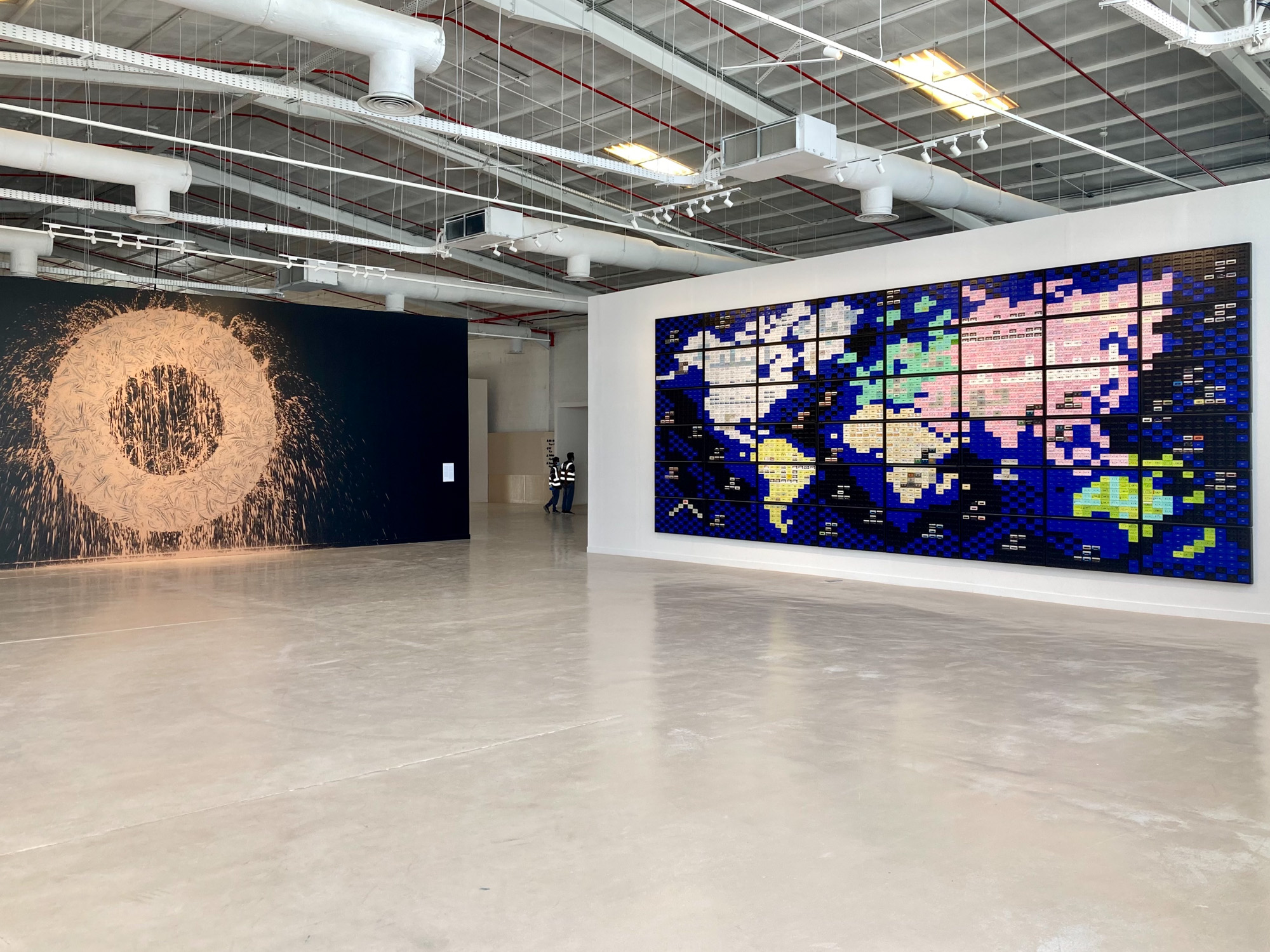
In the “Crossing the River” section, Richard Long recreated Red Earth Circle (1989/2021), a massive mud mural that was initially installed at the groundbreaking 1989 Paris exhibition “Magiciens de la Terre,” the first international presentation to explore a global vision of contemporary art by mixing Western and non-Western artists. The version of the work at Diriyah uses Saudi Arabian red clay, and addresses man’s desire to control nature. Meanwhile, Maha Malluh’s installation World Map (2021), from her Food for Thought series, arranges 3,840 repurposed cassette tapes of Islamic religious texts from the 1980s in recycled bread-baking trays to construct an image of the world during the Covid-19 pandemic, which has been as politically misinterpreted in the present as religion has been in the past.
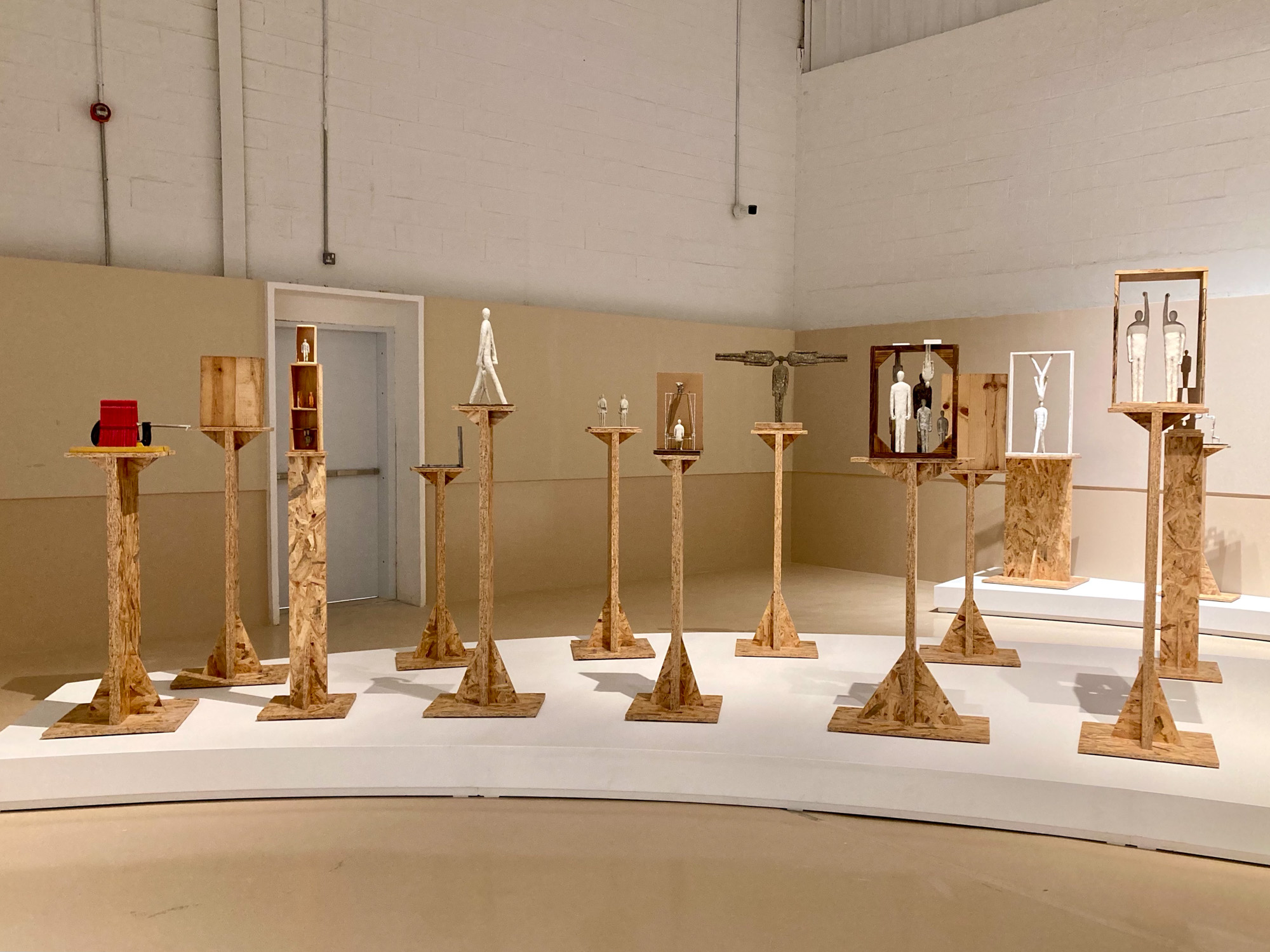
The section continues with sculptures by the pioneering Chinese contemporary artist Wang Luyan, who was a member of the avant-garde Stars group in the late 1970s. Wang’s practice evolved from expressionistic abstract paintings to multimedia installations and sculptures, such as the Corresponding Non-correspondence (2010–19) series on view at Diriyah. Fashioned in papier-mâché, colored with markers and acrylic paint, and displayed on raw wooden pedestals, his everyman figurines convey the psychological situations that people deal with daily.
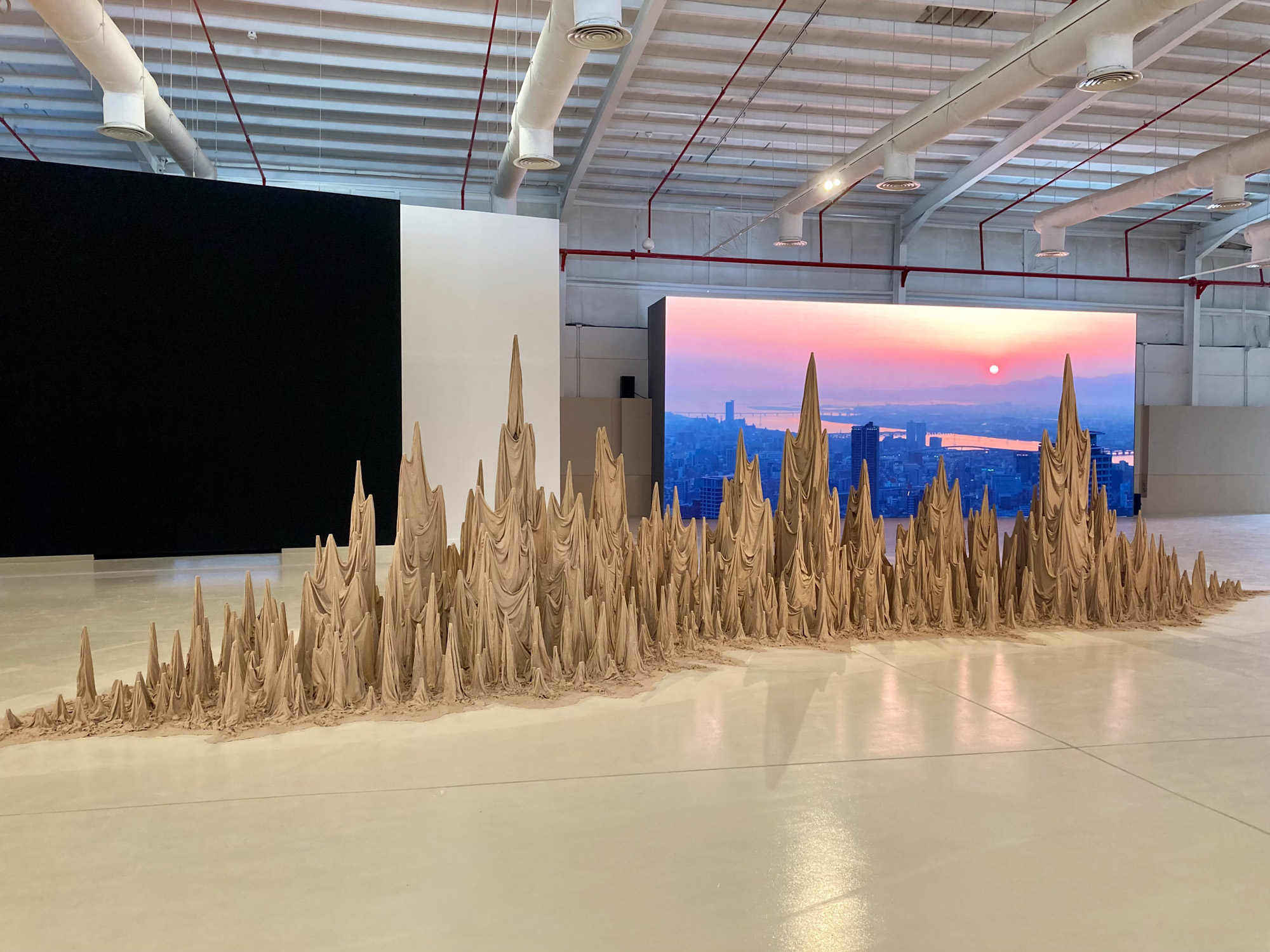
In the “Experimental Preservation” chapter is Zahrah Al Ghamdi’s Birth of a Place (2021), one of 29 new works commissioned by the Diriyah Biennale Foundation. The sprawling sculptural installation made of fabric and mud merges Saudi architectural construction methods of the past with the current building boom, which aims higher and higher with internationally designed skyscrapers. Nearby, Sarah Morris’s video installation Sakura (2018) documents a day in the Japanese city of Osaka at the time of the blossoming of the Sakura tree, which represents a moment of renewal and optimism in Japanese culture.
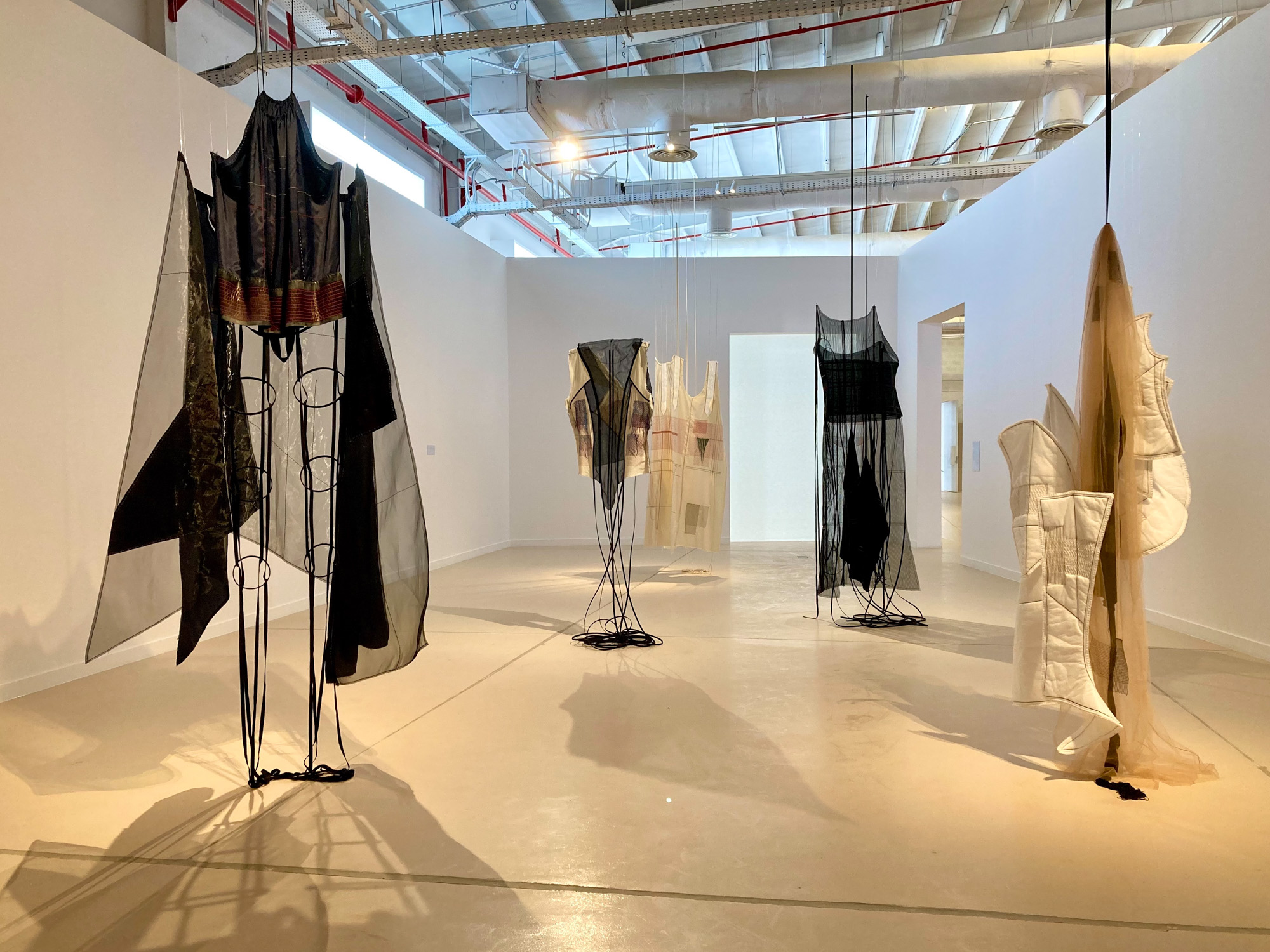
Informed by a background in fashion, Filwa Nazer deconstructed women’s clothing to make a series of sculptural textile works, titled Five Women (2021), which extends the sense of renewal in Morris’s video in the same section. While transforming the garments, which are charged with the stories and memories of the women who wore them, into airy abstractions, Nazer pays tribute to the important role that women have played in Saudi society.
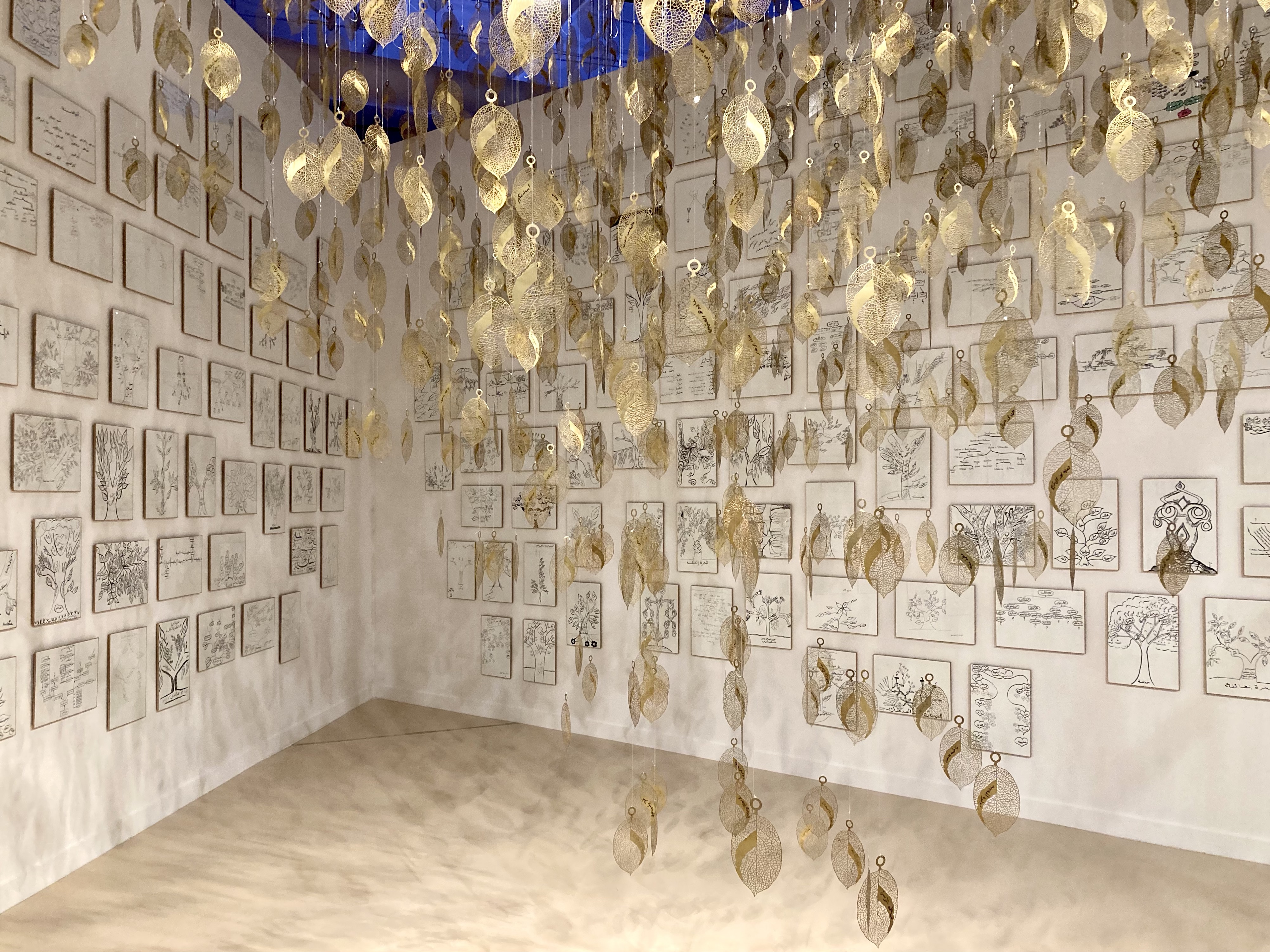
Similarly centering Saudi women in “Going Public,” Manal AlDowayan’s Tree of Guardians (2014) installation features 1,860 suspended brass leaves cast by women who participated in workshops, where they also made drawings (300 are on view here) of the maternal sides of their family trees. Sound recordings of the participants’ memories of their matriarchs are played as part of the installation, and new ones are gathered on site from viewers.
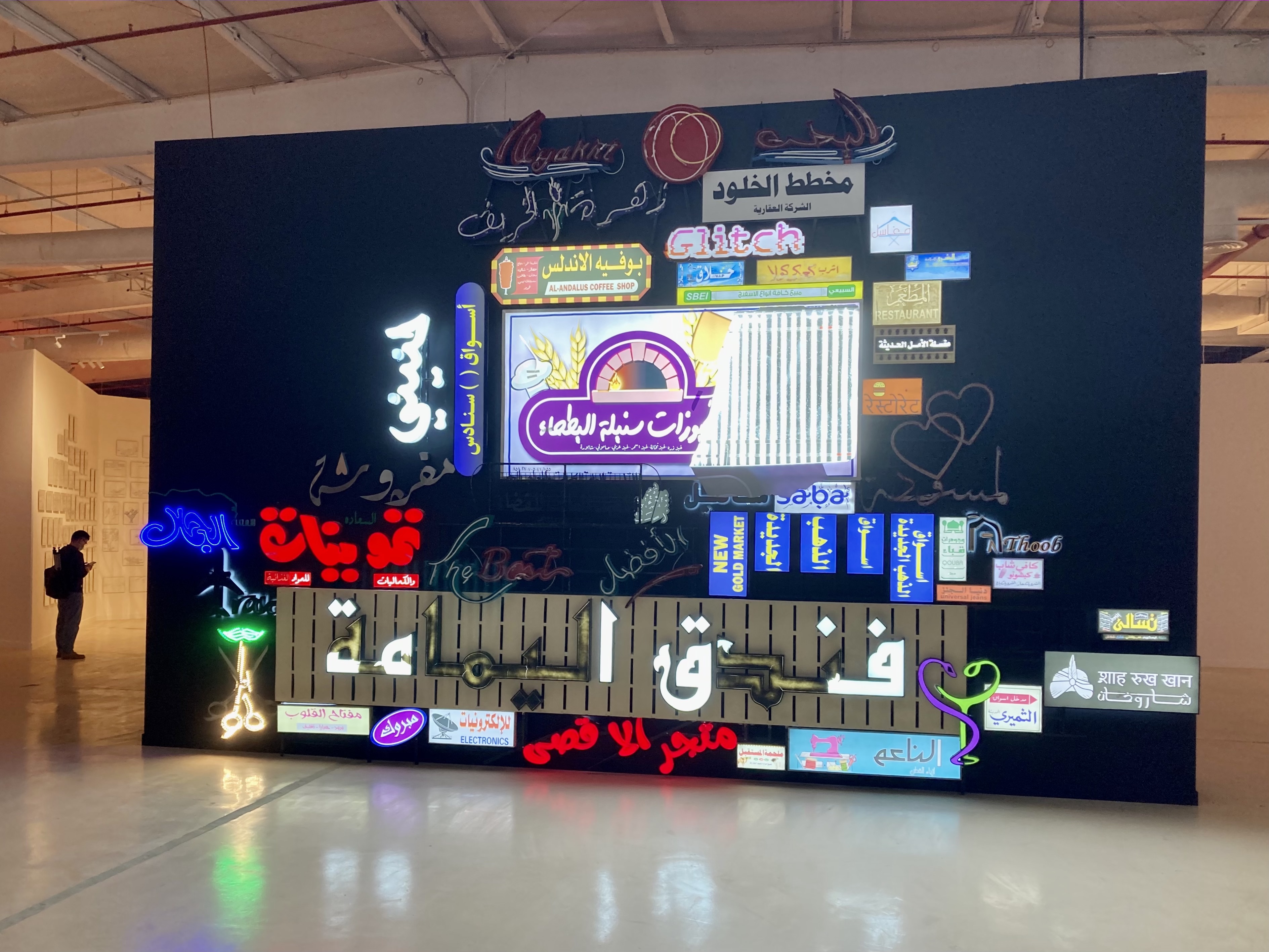
Abdullah Al Othman’s installation of commercial signs Manifesto: The Language & City (2021) lights up the “Going Public” room. Appropriating the city’s lively array of advertisements and banners, the artist creates a colorful cultural assemblage that speaks to the moment but will soon be seen as a relic, as new technologies and changing font styles take over.
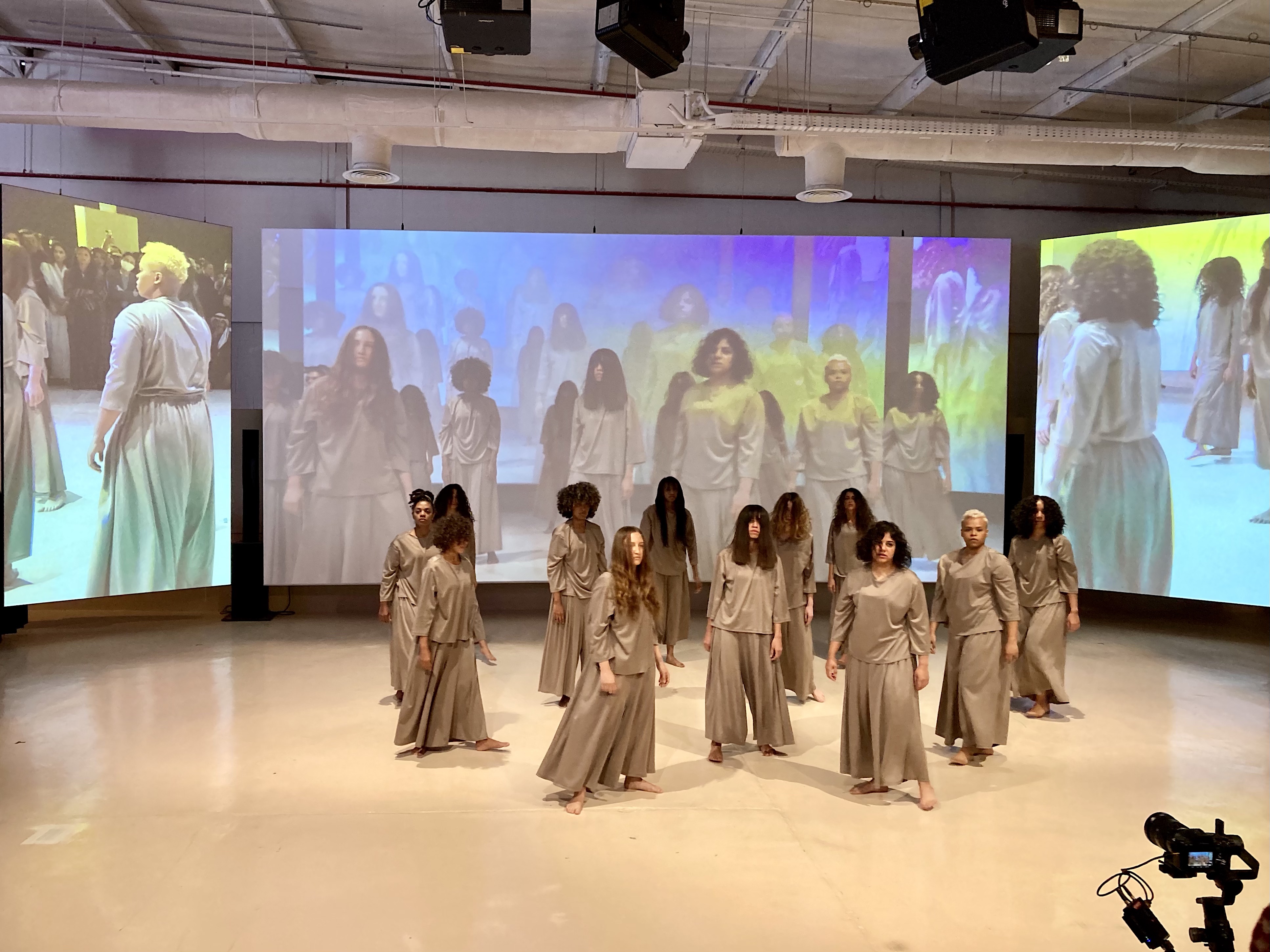
Elsewhere in “Going Public,” Marwah Almugait’s performance piece This Sea Is Mine (2021) uses vocals and movement to comment on the politicization of immigration. The audio element draws from a Sufi chant, a South African Xhosa chant, and a Fijiri folk sea chant, creating surprising connections between different cultures. The work was performed live by 12 Saudi women at the biennial’s opening and will be reprised for the closing event; in the interim, it is projected as a three-channel video.

“Brave New Worlds” spotlights Real Mass Entrepreneurship (2017–21), a remix of Simon Denny’s acclaimed 2017 project that examines the role of the Shenzhen technology industry in reshaping China’s economic future. It simulates stalls from the Huaqiangbei electronics market, one of the largest in the world, capturing the chaos. Alongside cases displaying cell phones and drones, Denny presents a video that looks into the world of startups.
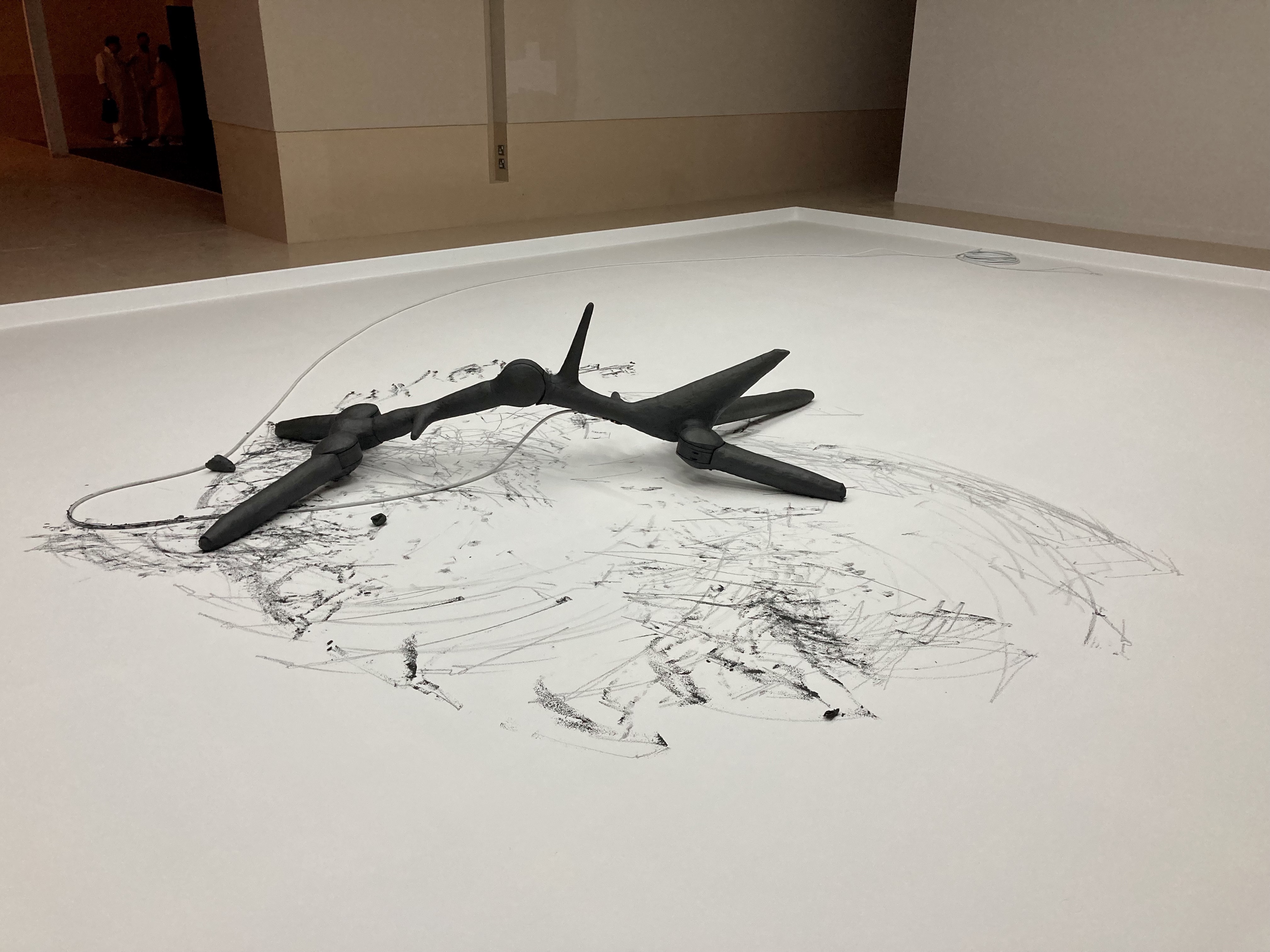
Another new artwork commissioned by Diriyah Biennale Foundation, Muhannad Shono’s On Losing Meaning (2021) was also located in the “Brave New Worlds” section. The kinetic drawing machine is covered in petroleum jelly and pigment, and has graphite tips, which mark the paneled base that it randomly navigates.
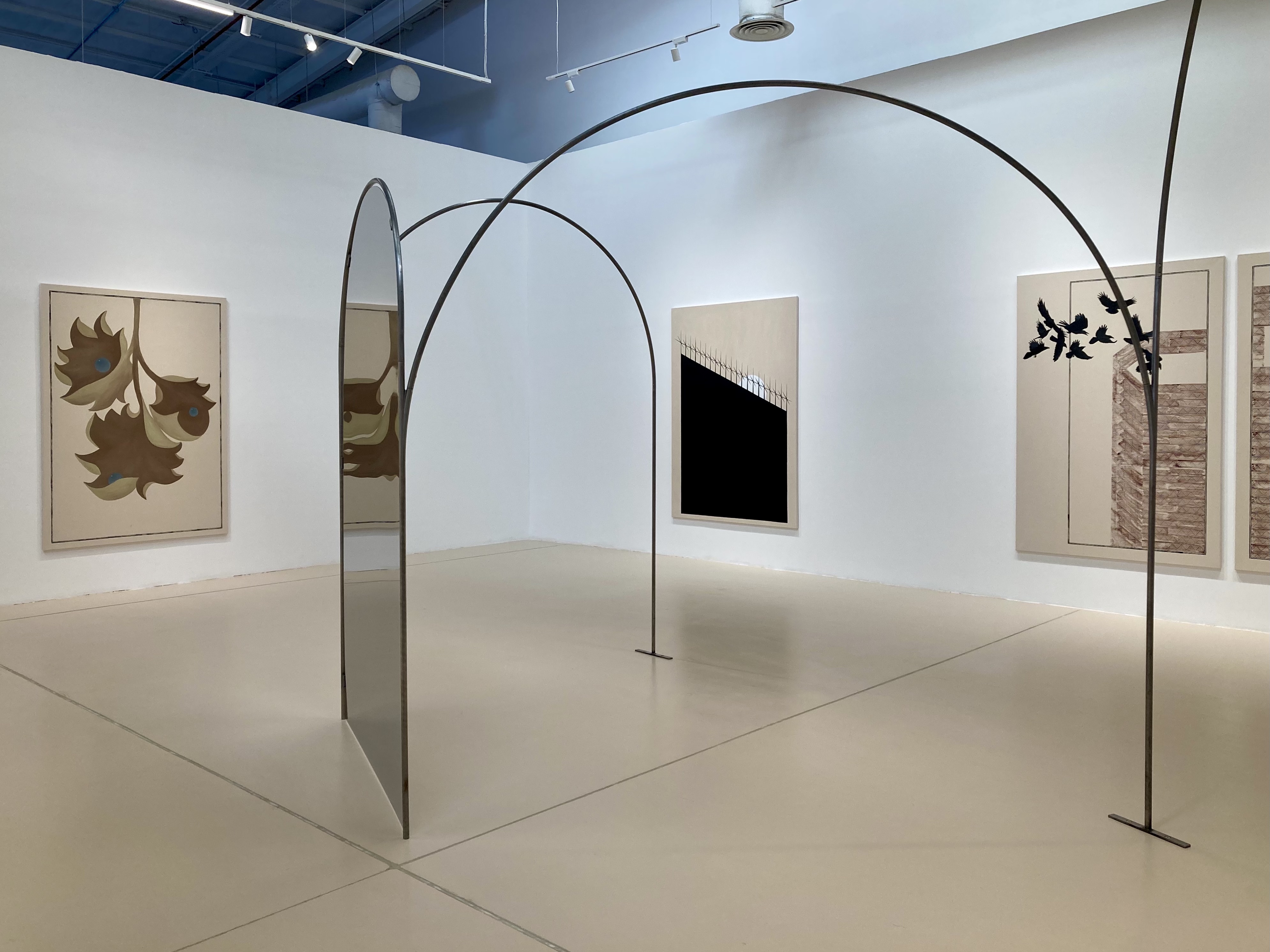
Placed under the theme of “Concerning the Spiritual,” Han Mengyun’s installation The Pavilion of Three Mirrors (2021) builds on the artist’s interest in language and references a 12th-century Persian story about an art competition called by Alexander the Great and the emperor of China, where a Greek artist made a masterful painting and a Chinese artist fashioned a polished mirror to reflect the Greek painting.
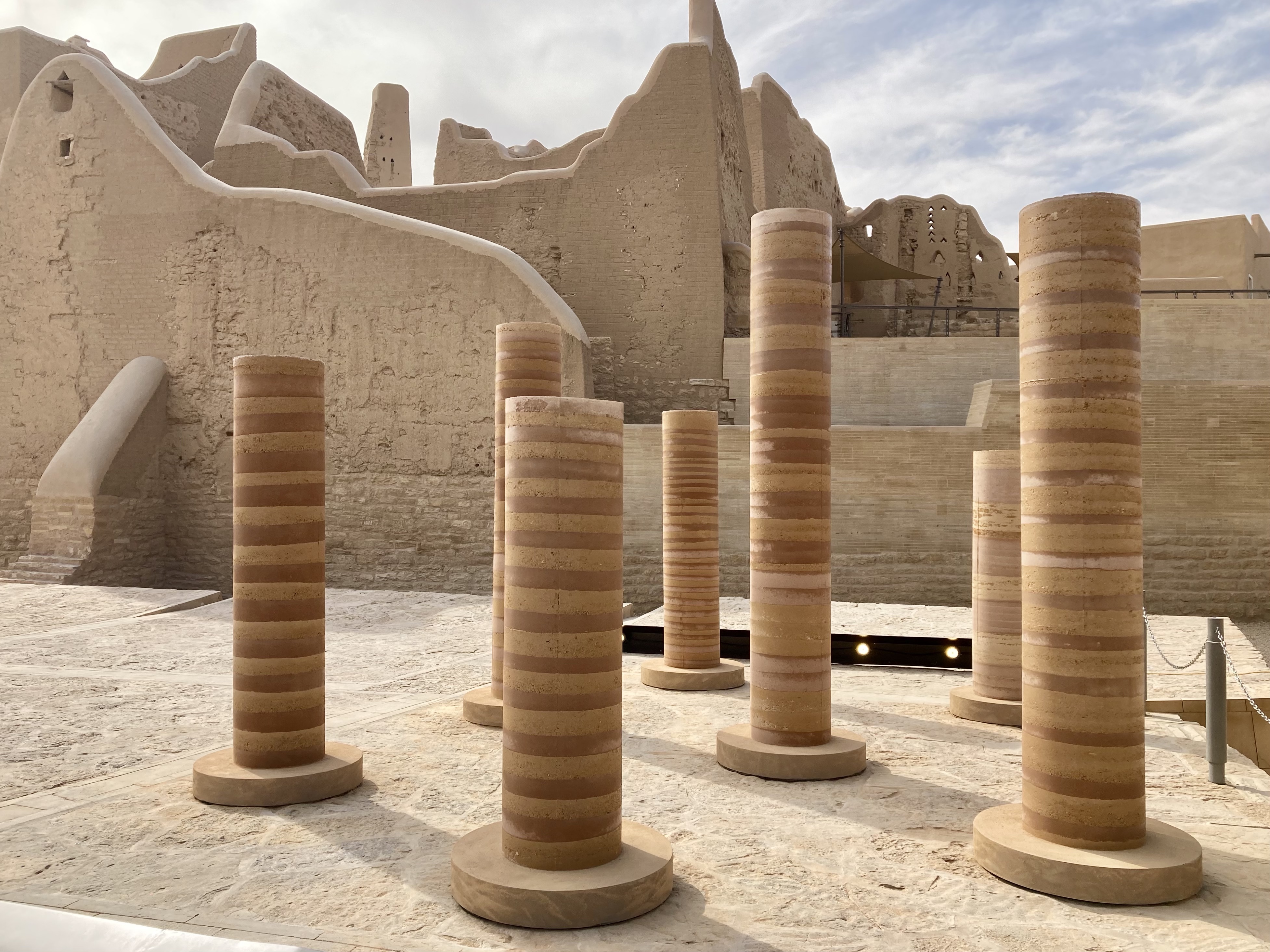
One of the biennial’s two offsite installations, Hmoud Al Attawi’s Al-Nourhah Pillars (2021) is placed at the entrance to At-Turaif, a UNESCO World Heritage Site and the capital of the first Saudi state in the 1700s and 1800s. The seven pillars are made from layers of mud, calcium chloride, and rammed earth, and pay tribute to seven significant women who helped shape the history of the Kingdom, from Princess Sara bint Ahmed Al Sudairi, mother of King Abdulaziz, the founder of Saudi Arabia, to Ghaliyya Al Bogammiah, a Saudi fighter who defended Mecca during the Ottoman-Wahhabi War.
2022 is a great time to be a Saudi artist. While the Kingdom has long had contemporary art, it now has thriving platforms to showcase works. Among these initiatives with global reach, the Diriyah Contemporary Art Biennale connects Saudi and international artists—and, with five Saudi artists who are participating in the Biennale having recently been selected to exhibit in the 2022 Biennale de Lyon, the promise for further cultural exchange is quickly becoming evident.
The first Diriyah Contemporary Art Biennale is on view at the JAX cultural district until March 11, 2022.







